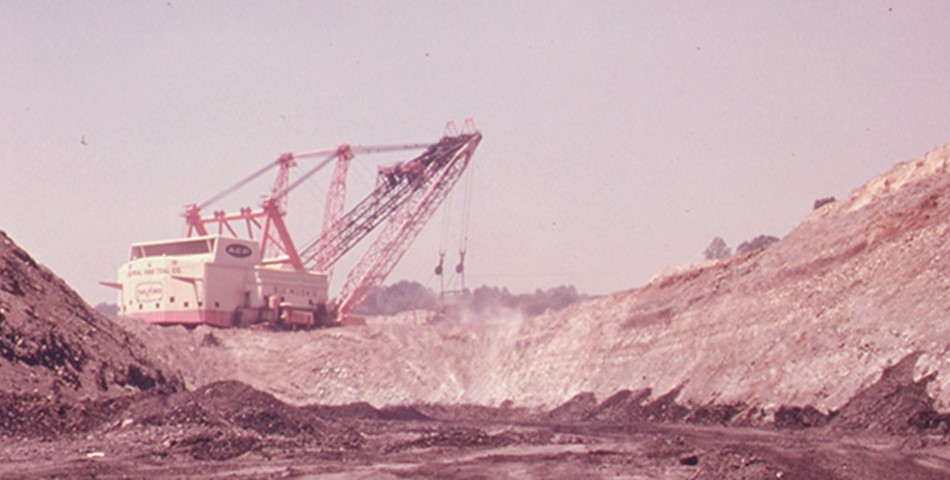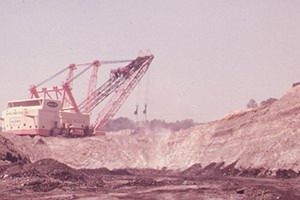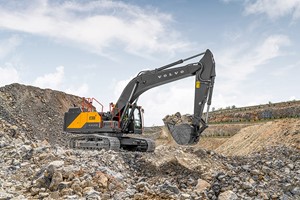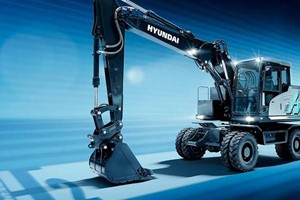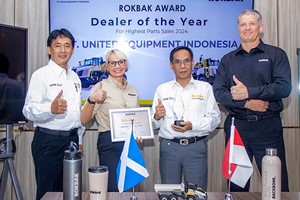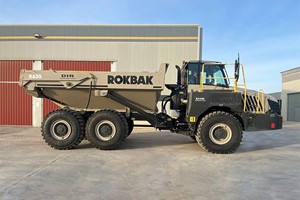Mining operations have a long and complex history, with several giant machines being built in their heyday that still holds world records! One such dragline bucket excavator holds the record for largest dragline in the world, even though the machine has been out of operation for nearly 30 years!
What is a Dragline?
A dragline usually refers to a large bucket excavator that is controlled by a system of pulleys, chains, and ropes that hoist the bucket. Dragline buckets are enormous machines that can move many tons of dirt, rock, and overburden.
The system consists of a large bucket suspended from a boom that is moved by the pulley system. The ropes are powered by a strong motor and have two main parts. The hoisting rope, which hoists the bucket from the boom. The drag cable then draws the bucket system horizontally. Using these two main cables, operators can control the bucket and move it around.
Though the largest dragline bucket in the world is no longer in use or existence, it still holds a fond place in record books and the memories of machinery enthusiasts.
Big Muskie
Big Muskie was a legend among machines while in operation. Also called Muskie and Ol Musky, the machine was a model 4250-W Bucryus-Erie dragline. It was the only model ever built, and took two years and some 200,000 hours to construct. When Muskie was built in 1969, it cost $25 million dollars. That’s approximately $171 million today!
Big Musky holds the record of being the largest dragline in the world, and its size and scope was on par with the largest bucket excavator record-holder, the Bagger 288!
How Big Was Big Muskie?
Big Muskie had an enormous bucket that could hold two greyhound buses side by side. It needed so much power to operate the cables and motors, that the electricity used could have powered 27,500 homes while the machine was operating!
In fact, special agreements had to be made with local power companies when Big Muskie was on the job. The electricity cost tens of thousands of dollars an hour, and explains why the crew of five usually worked at night when power costs were cheaper.
Big Muskie was mobile, but only for short distances- usually less than a mile. It had hydraulic walker feet and moved about 1.76 inches per second, or about 0.1 mph.
The Fate of Big Muskie
Big Muskie was in service for 22 years before it simply became too expensive to operate. This is due to a combination of increased electricity costs, a drop in coal demands from the 1977 Clean Air Act and a growing outcry to stop strip mining operations in the area from the community.
In 1991, Big Muskie was removed from service. Unfortunately, it cost so much money to dismantle, transport and reassemble the machine that no one would purchase it. In addition, Germany had already made giant draglines obsolete with the invention of low-power, higher efficiency bucket wheel excavators like the Bagger 263 and 288. Muskie sat abandoned for 8 years before the EPA passed legislation that required all equipment be moved from former strip mines. That was the death-stroke for the old machine, and it was broken down and sold for scrap in 1999.
Miners’ Memorial Park
However, at least one part of Big Muskie survived. The enormous bucket was moved to a park in Ohio commemorating coal miners in the area, and it now sits in the park alongside an information center talking about the mining history in the region.
Big Muskie also left a fond legacy in a wildlife park called the Wilds nearby. The area is a reclaimed strip mine that is now home to diverse flora and fauna.
Modern Draglines
Giant draglines have long since been made obsolete, but dragline excavators are still very much in use. The largest available dragline on the market today is Joy Global’s P&H 9020XPC. The bucket has a capacity of (110yd³ to 160yd³.) Unlike the hydraulic engines and motors of years past, current draglines use digital AC controls.
Although dragline buckets used in mining today absorb far less power and are made with efficiency in mind, modern mining technology has ancestors like Big Muskie and the German Bagger 288 to thank for its progress.
Overview
Draglines used for the construction of roads, ports, or other infrastructure projects are typically smaller than draglines used for mining, and can be disassembled and relocated. These types of draglines are typically mounted on caterpillar treads, and many cranes can be implemented as draglines. Most of these draglines are diesel-powered.
Draglines meant for the removal of overburden above coal or for tar-sand mining are amongst the largest vehicles ever constructed. These machines are purpose-built and rarely leave the excavation site. Draglines of this magnitude are mobilized by 'walking feet' which pick-up and replace the dragline a couple yards at a time; caterpillar tracks would sink or collapse in loose soil below the machine. Furthermore, mining draglines are often hardwired into a high-voltage grid due to its immense power requirements.
Despite the sizeable cost of draglines, they remain popular due to their reliability and ease of waste removal.
Pros: Dragline system is ideal for underwater excavating and canal dreading
Cons: Weight and size make it impractical for smaller jobs




